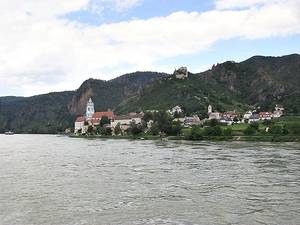Wachau

The narrow valley of the Danube between Melk and Krems in Lower Austria is known as the “Wachau”. In 2000 this cultural landscape with the monasteries of Melk and Göttweig and the historic centre of the pitoresquely situated city of Krems has been included in the UNESCO list of World Heritage Sites.
Besides the impressive landscape and the numerous cultural monuments, the Wachau is above all famous for its wines. The particularity of “Steinfeder”, “Federspiel” or the “Smaragd” is that the alcoholic content of all these wines is very low. This region is also well-known for the Wachau apricot and the annual natural spectacle of the apricot blossom, which lures a lot of tourists every spring. Oldest tracks of human colonisation in this region lead to the time of the early Old Stone Age (Neanderthal). The famous “Venus of Willendorf”, an 11cm high voluptuous female statue, is 25.000 years old and nowadays exhibited in the Museum of Natural History of Vienna.
The Wachau is rich in history and famous personages, as e.g. the “Kuenringer”, a medieval noble family. The impressive ruins of Aggstein and Dürnstein castles keep the memory of them alive. In 1193 the English King Richard I. (Richard the Lionheart) was kept imprisoned for several weeks in Dürnstein castle, when he was on his way back from the Third Crusade. During the Napolean Wars, the Wachau again became scene of major historical events. On November 11th, 1805 the French and Russian-Austrian troops converged at the Battle of Dürnstein.
Another famous sight is the blue tower of the former Dürnstein Monastery church, which has become the Wachau’s landmark.
Sources:
www.wachau.at;
www.bestof-wachau.at
Image source:
http://commons.wikimedia.org/wiki/File:Duerenstein_an_der_Danube.jpg





